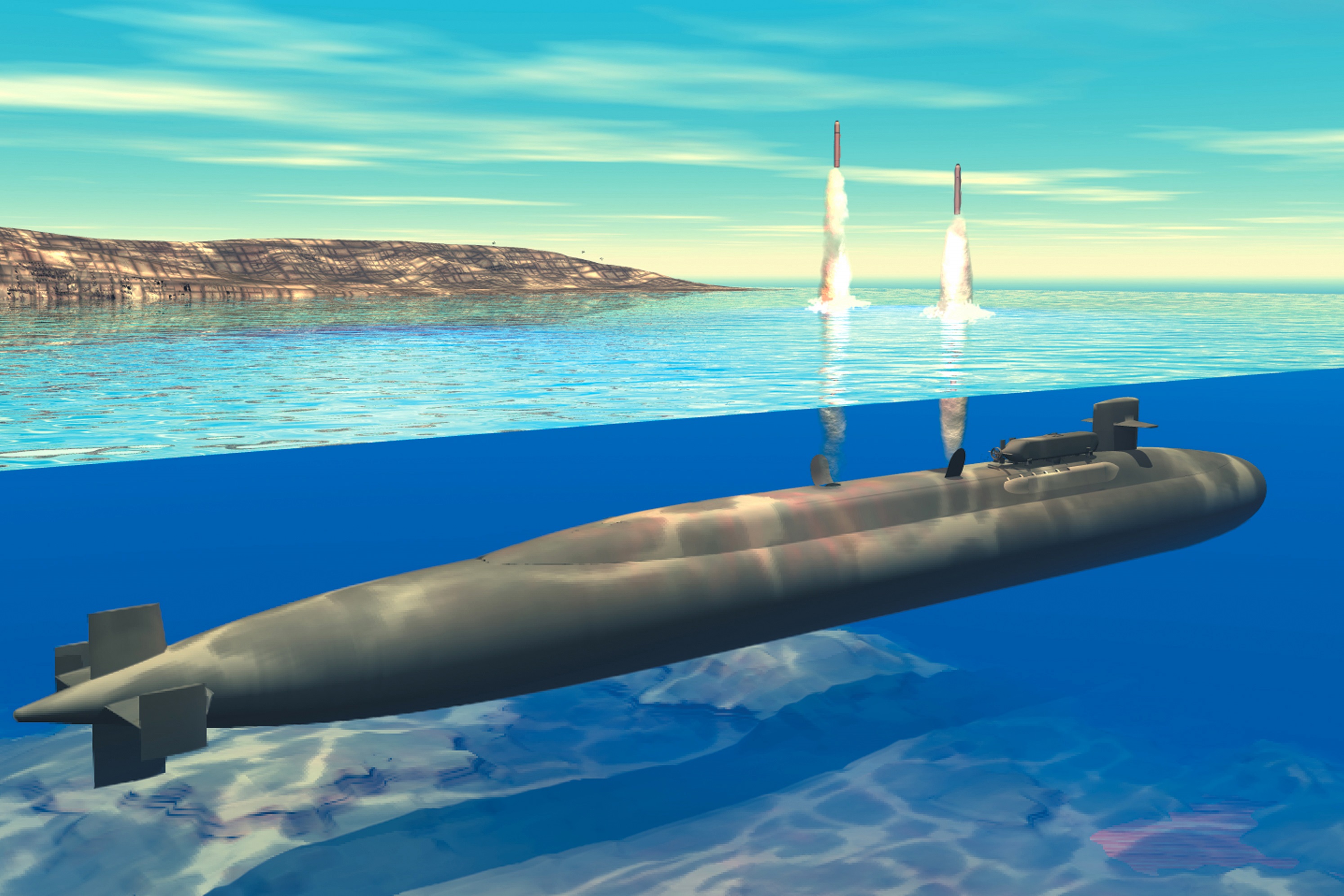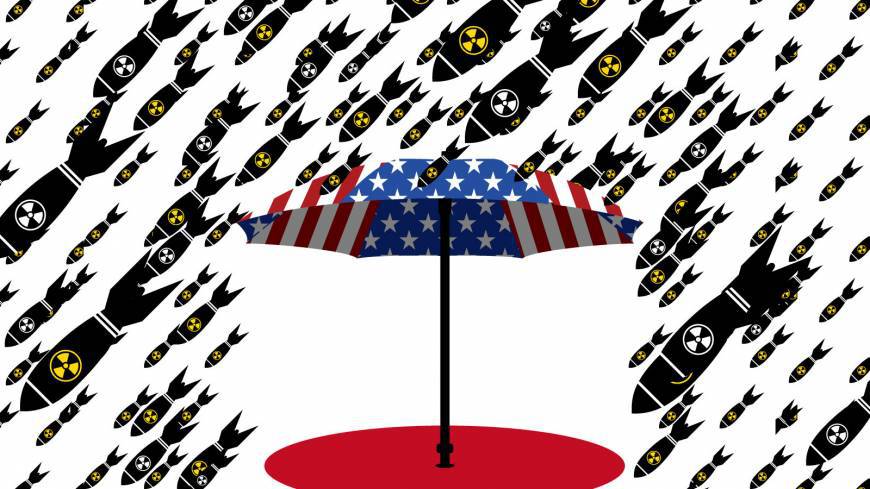
“No First Use” Is No Simple Matter
Fred Kaplan / Slate.com
(November 3, 2021) — A debate is raging behind closed doors in the Biden administration over whether to declare that the US will never be the first country to use nuclear weapons in a conflict — that the “sole purpose” of such weapons is to deter, and retaliate against, a nuclear attack by another country.
To most people, the news may seem puzzling: Isn’t this US policy already — if an enemy nukes us, we’ll nuke the enemy? In fact, it is not US policy. Our war plans and our relations with key allies have long been premised on the pledge, and the rehearsed possibility, that we will use nuclear weapons first — not in a surprise attack but in response to conventional aggression against an ally or to a large-scale chemical, biological, or cyber attack that can’t be halted without resorting to nukes.
Some of Biden’s midlevel aides are known to favor a “sole purpose” policy. Biden himself, as vice president, endorsed the view in a speech (vetted by President Barack Obama) 11 days before the end of their second term:
Given our non-nuclear capabilities and the nature of today’s threats, it’s hard to envision a plausible scenario in which the first use of nuclear weapons by the United States would be necessary or make sense. President Obama and I are confident we can deter — and defend ourselves, and our allies, against — non-nuclear threats through other means … [T]he president and I strongly believe … that deterring — and, if necessary, retaliating against — a nuclear attack should be the sole purpose of the US nuclear arsenal.
Obama had been set to declare such a policy in the first year of his presidency, but he was dissuaded from doing so. It is likely that Biden will ultimately be dissuaded as well.
To understand why this is a knottier issue than it seems at first glance, we must take a look at history.

In the early phases of the atomic age, in the 1940s and ’50s, our policy was to fire off nuclear weapons in response to any Soviet or Chinese aggression against the US or its allies. President Dwight Eisenhower called this policy “massive retaliation.” Ike was horrified by the bomb’s destructiveness, but he also thought that any conflict with the USSR or Red China would escalate to a nuclear conflict and so, therefore, the only wise policy was to deter them from starting a conflict by threatening them with obliteration if they did so.
Besides, the US had no large army to stop a Communist invasion in Europe or Asia, and Eisenhower—a penny pincher—didn’t want to spend the billions of dollars required to raise such an army. So nukes were seen as the only way out.
However, in the early 1960s, the Soviets started fielding their own nuclear missiles and bombers capable of striking the US As a result, “massive retaliation” lost credibility. If the Soviets invaded West Germany or occupied West Berlin, would an American president really clobber Russia with nukes if Russia could clobber us back? Both Britain, our main ally at the time, and France, our most skeptical one, had their doubts and so built their own small nuclear arsenals—an independent deterrent that didn’t rely on an American president’s willingness to sacrifice New York for Paris or Washington for London.
President John F. Kennedy and his secretary of defense, Robert McNamara, started to deal with the dilemma by strengthening conventional defenses in Europe and by devising “limited nuclear options,” so that, if a nuclear response were warranted, the US could deliver one without blowing up Soviet or Chinese cities — and thus spurring the enemy to blow up our cities. However, the Vietnam War diverted resources away from a European buildup, and the generals at Strategic Air Command (SAC), which controlled the nuclear arsenal, skirted the orders to develop small-scale nuclear options.
And so, throughout most of the Cold War, the United States continued to base thousands of tactical nuclear weapons throughout Europe and Asia, as well as thousands more in the missile silos, submarines, and bombers stationed at home. Not until the late 1970s did the US and NATO deploy a serious conventional defense force in Europe, and not until the late 1980s did SAC (soon renamed Strategic Command) truly weave small-scale options into the nuclear war plans.
However, America’s ultimate security pledge — that we will respond to a non-nuclear attack on key allies as an attack on our own homeland, with nuclear weapons if necessary — remained, and still remains, a centerpiece of US foreign policy. It’s called “extended deterrence” or the “nuclear umbrella,” and no president has retracted the extension or folded up the umbrella.

During the 1986 summit in Reykjavik, when word got out that Presidents Ronald Reagan and Mikhail Gorbachev were on the verge of agreeing to eliminate all of their nuclear weapons, the biggest cries of anxiety and protest came from the leaders of Germany and Japan. They were relieved when the deal fell apart.
In his first months as president, Barack Obama led a review of nuclear policy, including the question of “no first use.” (My 2020 book, The Bomb, details this review and similar reviews throughout the nuclear age.) In National Security Council meetings, he expressed doubts that any American president would ever use nuclear weapons first. The line between use and nonuse was bright and bold; the taboo against crossing that line was very intense; and besides, US conventional defenses were now strong enough that nukes weren’t necessary to deter or beat back a conventional invasion.
However, during those internal debates, Defense Secretary Robert Gates raised three points. First, a shift in policy would frighten and alienate our allies, making them doubt our broad security commitments, and possibly compel th
em to build their own nuclear arsenals, which could spark new regional nuclear arms races. Second, the US might someday face a large-scale biological attack; we stopped building bioweapons long ago, and so a nuclear response might be appropriate. In any case, saying that we wouldn’t respond with nuclear weapons might tempt an adversary to use, or threaten to use, bioweapons.
Gates’ arguments did not dissuade Obama from believing that no president would actually use nuclear weapons first or that the “sole purpose” of nuclear weapons was to deter and respond to a nuclear attack. But the arguments did persuade him not to declare that belief as official US policy.
However, Obama did not want anyone — citizens, officials, officers, allies, or adversaries — to believe that the US regarded nuclear weapons as legitimate responses to a broad range of threats. For one thing, he was very worried about nuclear proliferation and thought that, if the US declared nukes to be legitimate weapons, other countries — currently refraining from going nuclear — might take the plunge. So he formulated a compromise: His Nuclear Posture Review, published in April 2010, declared that “the fundamental purpose” of nuclear weapons was to deter, and retaliate against, a nuclear attack. (“Fundamental” seemed firmer than “principal” but more flexible than “sole.”)
The document also said that the US would not use nuclear weapons first against countries that a) did not possess nuclear weapons and b) were compliant with the Nuclear Non-Proliferation Treaty. The idea was that such a pledge might deter some countries from developing nuclear weapons — but would leave first-use as an option against adversaries that had nuclear weapons (Russia, China, and, at the time, potentially North Korea or Iran).
My guess is, ultimately, Biden — whose aides are currently debating and drafting his own Nuclear Posture Review — will strike a similar compromise. First, he was present during Obama’s NSC debates; he saw how it evolved and how it was settled. Second, he has already begun to hint at a middle ground.
Even during the 2020 presidential campaign, candidate Biden’s website reiterated his support for “sole purpose,” but added, “As president, he will work to put that belief into practice in consultation with our allies and military.” (Emphasis added.) Whoever wrote that passage knew — and Biden certainly knew, and knows — that “our allies and military” won’t go along with it.
More recently, just last week, after Biden’s sidebar meeting with French President Emmanuel Macron at the G-20 summit in Rome, the two leaders released a joint statement that included this passage: “The fundamental purpose of NATO’s nuclear capability is to preserve peace, prevent coercion, and deter aggression.”
This is key: They didn’t say the fundamental purpose was to “deter nuclear aggression,” but simply to “deter aggression.” Saying that another “fundamental purpose” is to “preserve peace” and “prevent coercion” also goes far beyond the goal of simply deterring and retaliating against a nuclear attack.
Biden’s Nuclear Posture Review will probably retreat from some of the more extreme statements in President Donald Trump’s 2018 review, for instance: “US forces will strengthen their ability to integrate nuclear and non-nuclear military policy and operations” — thus blurring a distinction that had previously been boldly clear. However, nuclear weapons have always been central to US policy, and, despite Biden’s personal skepticism, this is not likely to change under his watch.
Posted in accordance with Title 17, Section 107, US Code, for noncommercial, educational purposes.